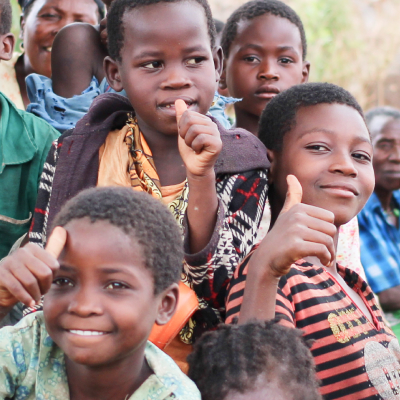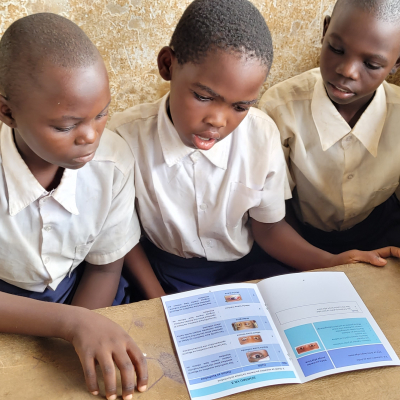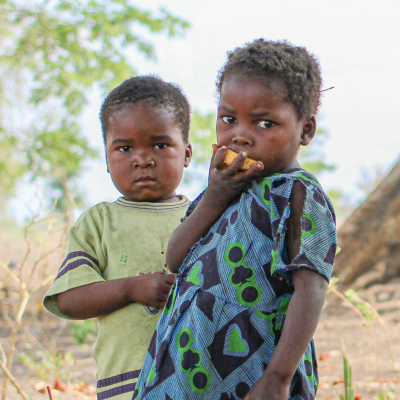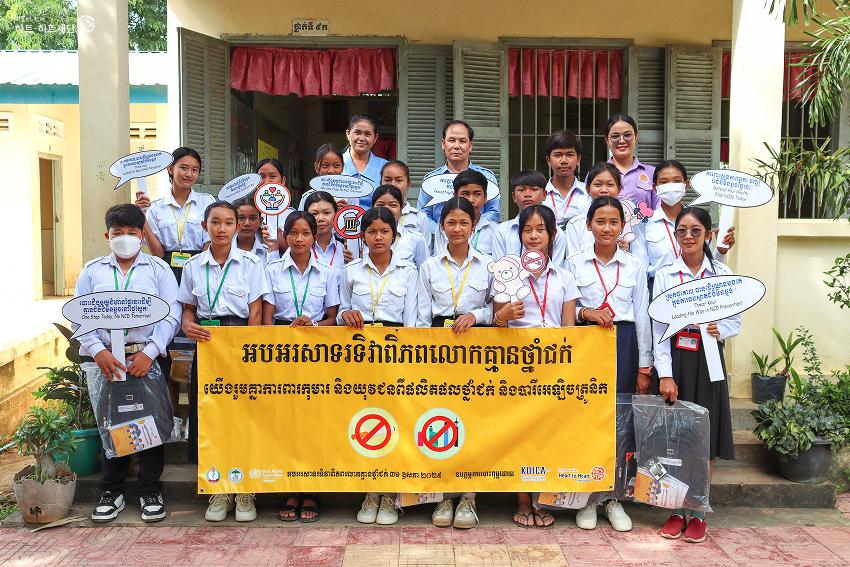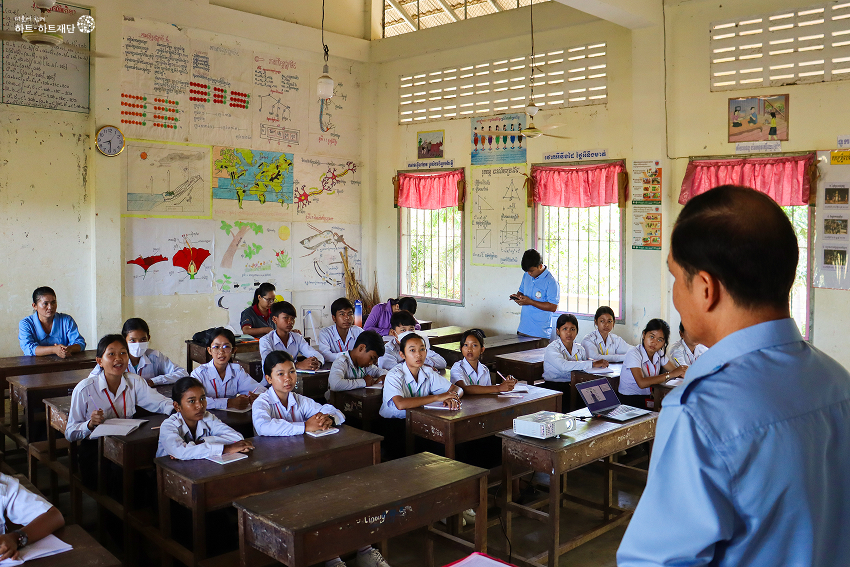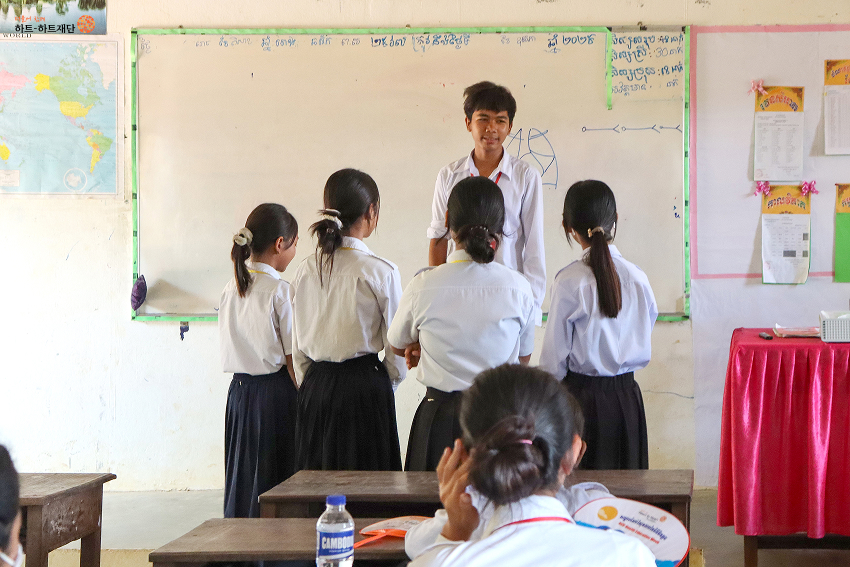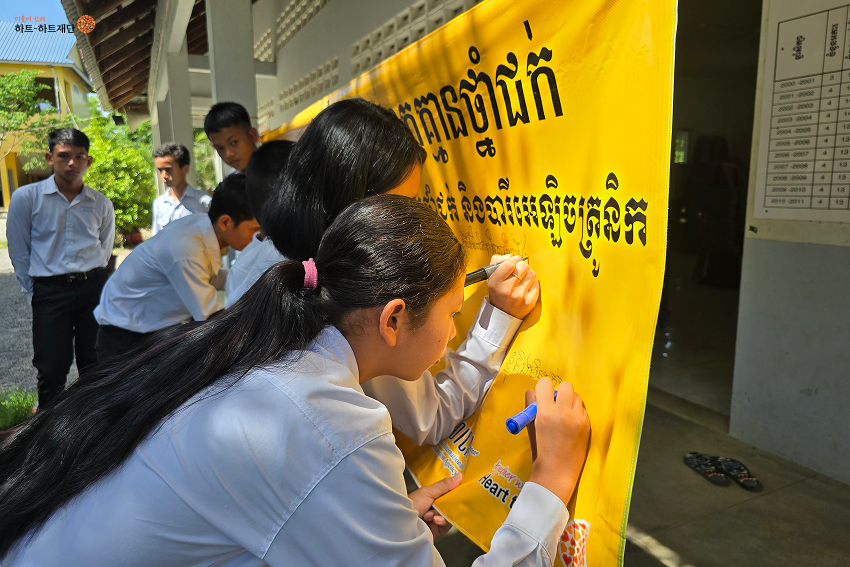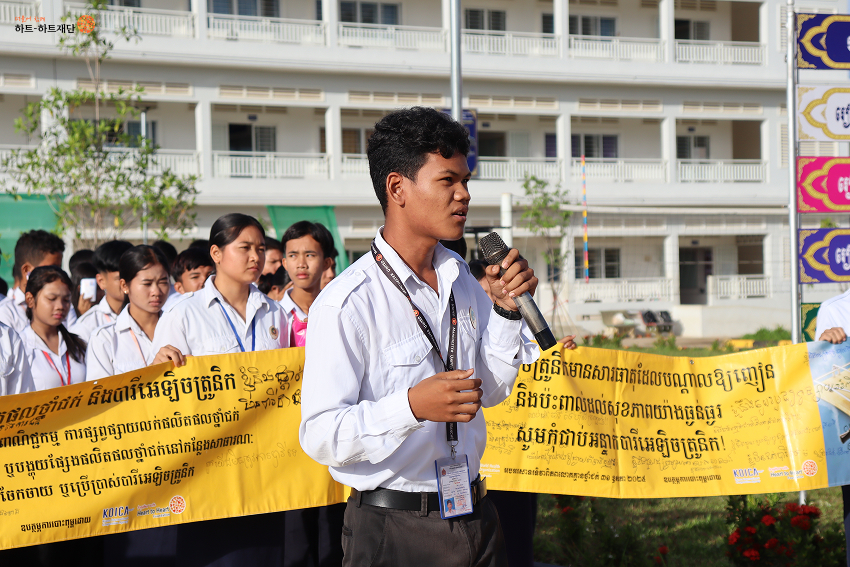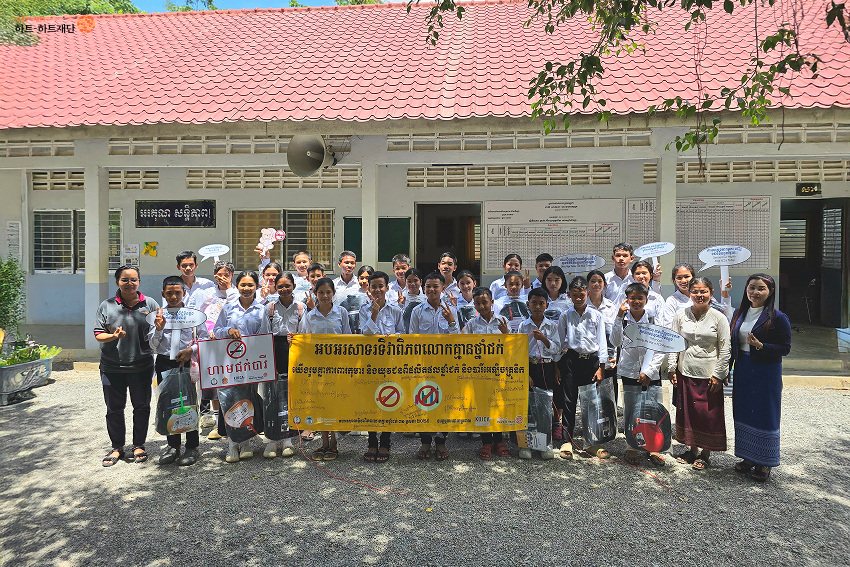Group photo of peer campaigners at Prey Kpos secondary school
Introduction to the Anti-Smoking Campaign
The Heart-Heart Foundation Cambodia Branch has been implementing a project
in Battambang, Cambodia, aimed at preventing and managing non-communicable diseases (NCDs).
In line with World No Tobacco Day 2025, we conducted an anti-smoking campaign
throughout May at two secondary schools and one high school in Bavel District, Battambang Province.
What is World No Tobacco Day?
World No Tobacco Day is an international observance designated by the World Health Organization (WHO) in 1987,
held every year on May 31st to raise awareness about the dangers of tobacco use.
Each year, the WHO announces a specific theme related to tobacco for this day.
The theme for World No Tobacco Day 2025 is:
“Unmasking the Appeal: Exposing Industry Tactics on Tobacco and Nicotine Products.”
This theme sheds light on how tobacco companies target youth through flavorings, packaging, and marketing strategies.
Dr. Saint Chinhan, District Chief of Tma Koul Operations, is conducting a theoretical class at Prey Kpos Middle School.
Tobacco use is a major cause and aggravating factor of NCDs, including chronic respiratory and cardiovascular diseases.
One of the most effective ways to prevent NCDs is to quit smoking.
We conducted an anti-smoking campaign at Prey Kpos secondary school,
Knach Romeas secondary school, and Lvea high school, all located in Bavel District, Battambang Province.
This campaign was organized in connection with the theme of World No Tobacco Day 2025.
It aimed to prevent youth smoking and to raise awareness among students, their peers, families,
and the wider community about the importance of preventing NCDs.
Peer campaigners at Prey Kpos Middle School are performing a short play on the theme of quitting smoking.
The anti-smoking campaign follows a peer education approach.
In this model, selected student campaigners first learn and understand key information about smoking and its risks.
They then share this knowledge with their fellow students in a way that promotes better understanding and engagement.
Because young people are more likely to exchange health-related information among peers during adolescence,
the peer education method enables students to receive and accept information more effectively.
Peer campaigners at Knach Romeas Middle School are writing their smoking cessation pledges directly on a banner.
Peer campaigners participated in a series of educational activities
focused on the health impacts and risks of smoking and secondhand smoke.
They engaged in theoretical lessons, discussions, and presentations covering topics
such as smoking-related non-communicable diseases and youth smoking issues.
Additionally, the students performed an impromptu play on smoking cessation
and took time to write personal pledges to quit smoking or support a smoke-free lifestyle.
A peer campaigner at Lvea High School is leading an anti-smoking campaign during the morning assembly.
The trained peer campaigners shared the key messages about smoking cessation
and the dangers of secondhand smoke during school morning assemblies.
They also hosted quiz sessions to reinforce students‘ understanding of the material.
Peer campaigners at Prey Kpos Middle School are leading an anti-smoking campaign during the morning assembly.
It is hoped that the health information delivered through these students will reach their families and communities,
ultimately contributing to a reduction in smoking and secondhand smoke exposure.
A student who participated as a peer campaigner from Lvea high school
in this anti-smoking campaign shared the following reflection:
"After participating in the anti-smoking campaign,
my friends became much more aware of the dangers of smoking and secondhand smoke.
We also learned more about the risks of e-cigarettes and NCDs.
Many of my friends said they would share what they learned with their families,
helping to spread awareness beyond the school.
This campaign was a truly meaningful and valuable experience for us.
I am deeply grateful to the Heart-Heart Foundation for giving us this opportunity to learn and grow.“
Group photo of peer campaigners at Knach Romeas secondary school
We hope that through this anti-smoking campaign, students‘ awareness will continue to improve and,
beyond that, bring positive changes in the attitudes of their families and communities as well.
By raising awareness and encouraging smoke-free habits,
we believe that the youth of Cambodia—who will lead the country‘s future—can live healthier lives and effectively prevent NCDs.
[Heart to Heart Foundation Cambodia branch has provided NCD treatment and prevention services to 48,056 local residents through the first phase (2021-2023)
of NCD prevention and Control project as a part of the Korean International Cooperation Agency (KOICA)’s Civil society Partnership Program.]
